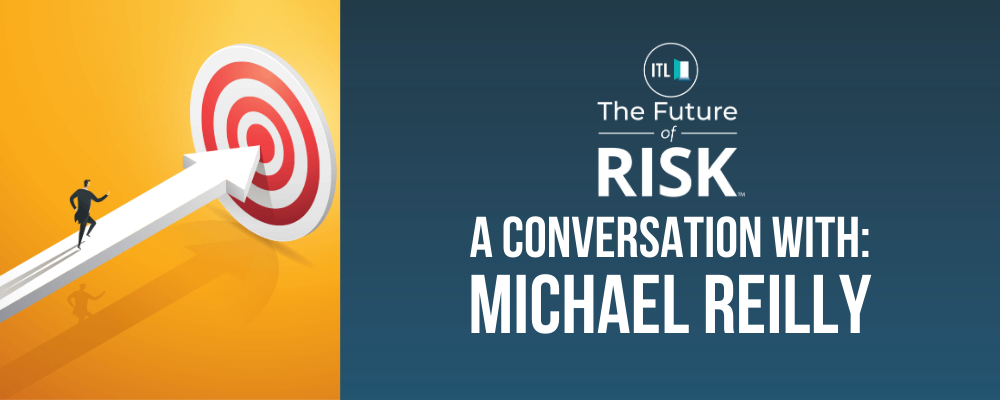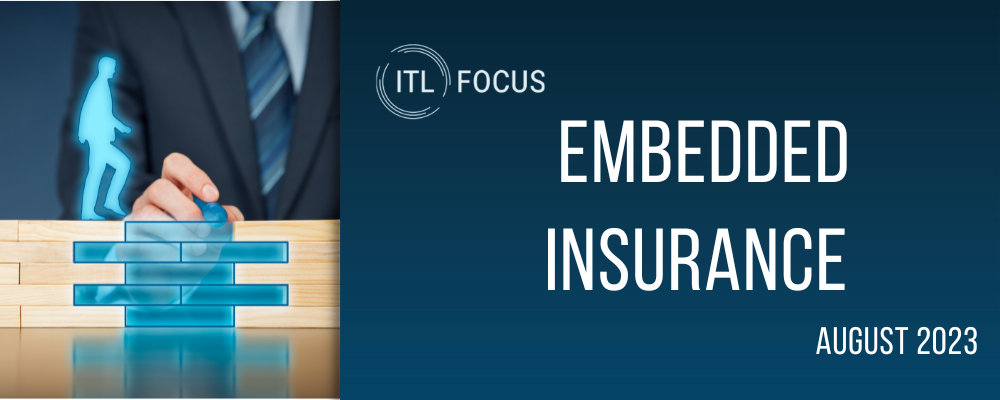As part of this month’s ITL Focus on parametric insurance, we spoke with Henry Gale, parametric insurance research lead at InsTech London, on the prospects for this increasingly popular approach to insurance. In addition to the interview, you can check out these recent posts from InsTech London:
How we spot parametric insurance trends
and
Best of both: bundling parametric with indemnity insurance
ITL:
At InsTech London, you put a clear stake in the ground a year and a half or so ago and declared that parametric insurance was a real breakthrough. Do you still feel that way?

Gale:
We do. We've just seen more products being announced, more startups emerging and getting investment, more partnerships and adoption as insurance companies get involved, as well. If you like, 2021 was a big year of announcements, and we’re looking to 2022 as maybe a year in which some of these products scale and we see greater success in parametric insurance.
For specific examples, I'd steer you to a report we released last year that profiled over 50 companies in parametric insurance; we'll update that later this year.
ITL:
Is there a particular area, such as agriculture, where you expect to see the breakthroughs?
Gale:
Catastrophes have always been the biggest area of parametric insurance. There's still potential for growth in that area. So that will stay the dominant trend, both for agriculture and for other areas.
It's been interesting to see new distribution methods to get farmers in different parts of the world better-insured. In addition, there’s lots of potential in things like travel insurance, event insurance, or cyber business interruption.
ITL:
What are some of the new forms of distribution?
Gale:
When it started, parametric insurance was very much concerned with big corporate risks and reinsurance. The innovations in the last few years have been expanding that to smaller and medium businesses or even to individuals. And all of those need quite different approaches to distribution.
With corporates, they are becoming more and more aware of parametric insurance, especially for traditional catastrophes like hurricanes and earthquakes. The challenge will be maybe making them aware of the potential with other natural perils, and getting brokers more involved in selling parametric insurance. For smaller and medium businesses, there are less established distribution routes to parametric insurance. So people are looking at whether you can do embedded insurance or go through brokers.
In almost all cases, parametric insurance is still best combined with indemnity insurance. For instance, you could take a deductible buy-down approach. If you’re a big corporate, you might have a high deductible on your earthquake risk but achieve that deductible by taking out a parametric insurance policy against earthquakes. You get an instant payout and then the rest of your damage gets covered by the other policy.
One trend that I was looking at recently is combining parametric triggers into an indemnity-based insurance policy; products that are partly parametric based on some events but also indemnity in other realms.
ITL:
Do you have a favorite example?
Gale:
One recent example that we found very interesting is that Vave, an MGA that Canopius set up, is going to be including extreme-temperature insurance in its policies. Whether it's because of a cold snap or extreme heat, anyone who's insured on those commercial property policies will get an automatic payout, as well as being covered for everything else that they have in their commercial property insurance.
ITL:
Parametric has always been intriguing to me, partly because the payout can be so quick and partly because you just take the expense of the claims adjustment process out of it. Do you have a way of quantifying those gains?
Gale:
In terms of the speed of payout, it depends on the sort of product and the amount of money, but we’re seeing companies make payments in hours. And, if you’re insuring large corporate risks, it's a big improvement to be paying the claim in days or weeks rather than in months or longer.
Parsyl, which has collaborated with Lloyds, insures vaccines and seafood and other perishable goods. When the shipment reaches its destination, if the sensor in the cargo shows that the temperature has gone above a certain level, spoiling the batch, the person receiving the shipment scans the QR code. In July, Parsyl paid a claim in eight hours.
ITL:
Is there a particular part of the world where parametric insurance seems to be happening faster?
Gale:
There are regional patterns. In Africa, there's potential for ensuring smallholder farmers, and we’re seeing several parametric programs in action. There's also agricultural parametric insurance happening elsewhere in the world, like India. In terms of catastrophes, the U.S. is always going to be a big focus, as well as Latin America. There's quite a lot of initiatives to insure vulnerable people in the Caribbean or South America against the risks associated with earthquakes and hurricanes. Some of the other applications, for non-damage business interruption or flood risk, apply quite universally.
ITL:
You’ve mentioned a couple of companies. Are there others to watch?
Gale:
Descartes Underwriting has managed to scale up its underwriting for parametric insurance against climate and catastrophe risk for large corporates. Generali is the insurer behind them. Global Parametrics has been structuring a lot of solutions to help vulnerable communities across the world. New Paradigm Underwriters handle large risks against hurricanes and earthquakes in the U.S.
ITL:
What haven't I asked you about that you think is important for people to understand about parametric insurance?
Gale:
Insurers are looking at opportunities for parametric insurance in areas other than climate and catastrophe, such as business interruption and cyber. Finding a scalable product for small and medium businesses is a big opportunity for insurers to write new business.








